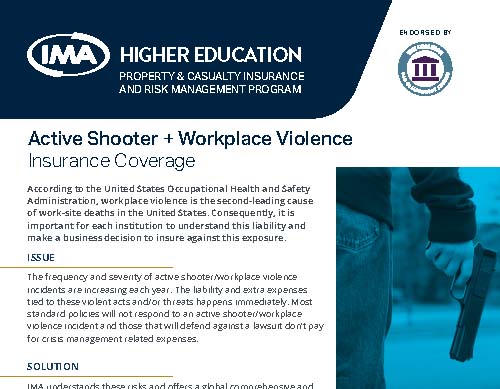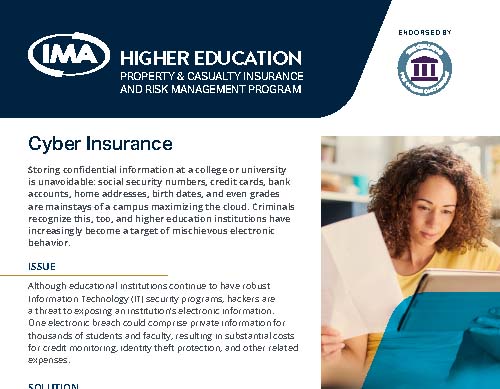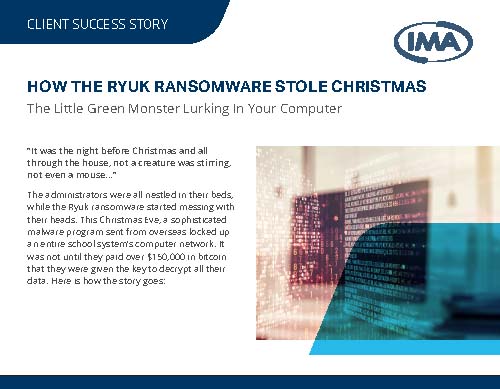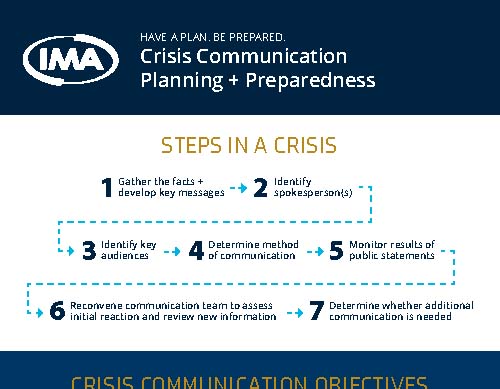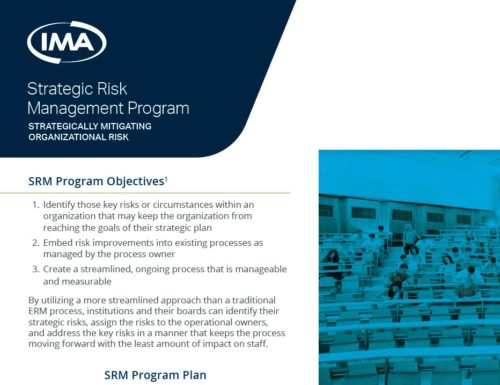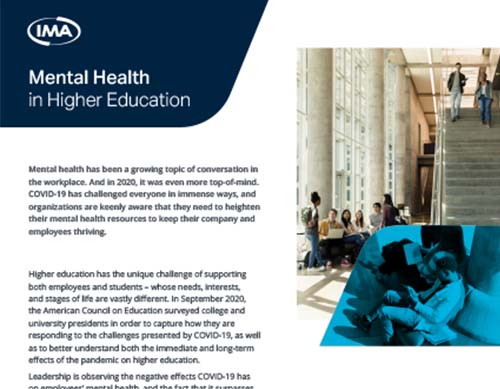Higher Education
IMA helps clients in higher education see
around corners, enabling them to take advantage
of risk rather than simply purchasing insurance.
IMA has a 100% SUCCESS RATE driving down net
cost of risk for private colleges.
Insurance by Industry | Higher Education
Protecting Assets
in Higher Education
Managing risk means more than insuring what is here today, but seeing ahead
to where the business will be tomorrow. IMA understands clients’ business
first and places insurance second.
We have experience in the following verticals:
+ State Associations
+ Private Universities
+ Community Colleges
+ Public Universities

Market Update Q3 2022
Over the past few years, events such as COVID-19 have shaken the foundations of higher education; as we look to 2023 and beyond, higher education leaders recognize challenges including the changing face of the student body, the job function of faculty and what a campus of the future could look like. Leaders in this industry are being pushed to reconsider the assumptions and traditions of the past.
Market Update Q2 2022
The pandemic created significant challenges for American colleges and universities. Between the fall 2019 and spring 2022 semesters, undergraduate enrollment dropped by 6.6%, or over a million students. Community colleges enrollment declined in that time period by a staggering 13%. The nation’s under-18 population had already been declining — from 74.2 million in 2010 to 73.1 million in 2020 — and the overall share of 18-24 year-olds enrolled in college declined from 41.3% in 2009 to 40.7% in 2019.
Like many aspects of the American economy, these changes can be told as a story of haves and have-nots. Elite universities saw steady enrollment and soaring endowments throughout the pandemic, while community colleges are still struggling to maintain numbers, and some small, regionally-focused private 4-year colleges were forced to close or merge. The latest casualties are Ohio Valley University, which shut its doors for the spring 2022 semester, and Mills College, one of the last extant women’s only schools, which is set to be acquired by Northeastern later this year and become co-ed.
One bright spot is the return to in-person classes for the spring semester, with over 90% of colleges and universities welcoming students back to campus. Whether this move persists will partly depend on external public health factors, but also on universities’ appetite for learning to live with COVID, as many have advocated.
Risk Management Considerations for Emerging Technologies In K-12 Education
Prior to the pandemic, many K-12 schools and school systems were slow to adopt digital education technology to support their administrative services and enhance classroom learning experiences. In 2020, though, they were forced to quickly implement a wide range of technology software and service solutions to support learn- and teach-from-home environments. Most of these tools will continue to be utilized by students, teachers and administrators in our new, high-tech, post-pandemic environment.
This digital education technology comes with risks. When schools act quickly within rapidly changing environments, important due diligence steps – including product investigation and consideration of compatibility with existing systems – might be rushed or even neglected. This can leave K-12 schools vulnerable to cybercriminals, who can interrupt online classroom sessions, hijack parental communications, steal personal identifiable information and shut down school IT systems with ransomware attacks.
Market Update Q3 2021
Though many have struggled to operate in the COVID-19 pandemic, our nation’s education system has seen unmatched challenges over the last year and a half. The rush to slow the spread of the virus led to closures of schools across the country, with little time to ensure continuity of instruction or to create a framework for deciding when and how to reopen schools. These institutions had to learn hard lessons fast in 2020-21 and, as a new school year begins, states, colleges and universities continue to grapple with the high-stakes decisions on COVID-19 protocols. As colleges and universities evaluate how best to protect their students and faculty, parents and students can only look on and do their best to react to the constant state of change.
Coalition for College Cost Savings

“As a former CFO of two private, non-profit colleges, I understand the unique challenges and limitations facing CFOs and Risk Managers. It was important for The Coalition to partner with a broker that understands and is committed to our Private, Non-Profit Colleges. By leveraging the strength of The Coalition’s over 900 Colleges and Universities, the Coalition program through IMA allows our schools to Transform Processes, Reduce Costs and Increase Efficiencies.”
– Lyen Crews, President, The Coalition for College Cost Savings
Testimonials


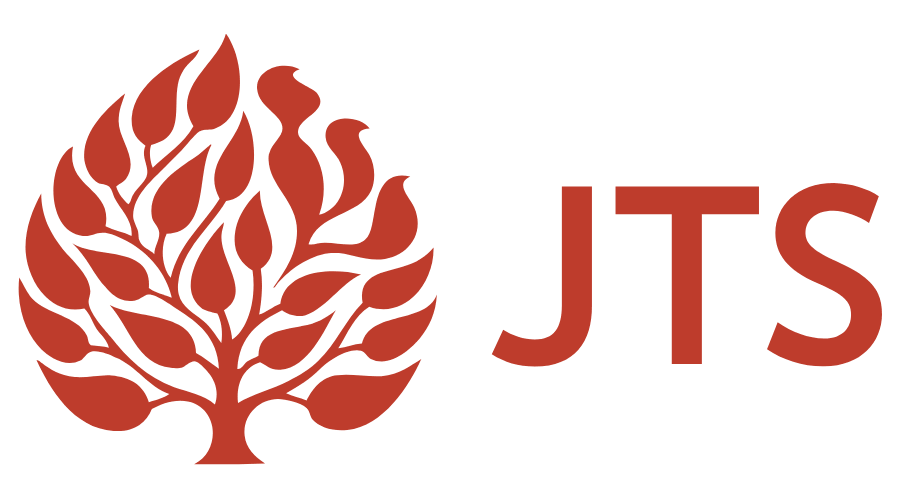
“We are delighted that IMA is our broker. In very short order, the IMA team analyzed our insurance program, identified redundancies and inefficiencies, and offered improved coverage for less cost. They are true partners and we are grateful to be working with them.”
– Keath Blatt, General Counsel, Jewish Theological Seminary

“IMA is the broker of choice for the KICA. We have seen an immediate positive impact since joining this program. The results we’ve seen are a great example of how the KICA program, under IMA’s management, can achieve significant results for each member.”
– Matt Lindsey, President of the KICA
IMA Private College Success Story
CASE STUDY – Faith Based Private College (2,000 students)
IMA not only reduced a private college client’s premium spend by 30% in year 1, but also provided benchmarks to assist them with coverage and limit selections.
✓ 30% Premium reduction
✓ $122,000 Annual premium savings
✓ Lowered liability deductibles
✓ Doubled educator liability limits
✓ Doubled cyber insurance limit and improved coverage
✓ Eliminated International Insurance program gaps
✓ Added Active Shooter / Workplace Violence insurance program
✓ Implemented targeted risk management strategies including revised fleet & driver safety program

Resources
Webinars
Higher Education Contacts
 DEREK KARR
DEREK KARR
derek.karr@imacorp.com | 303.615.7766
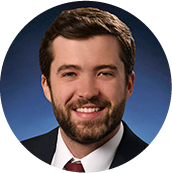 CHAD DELINE
CHAD DELINE
chad.deline@imacorp.com | 303.615.7724
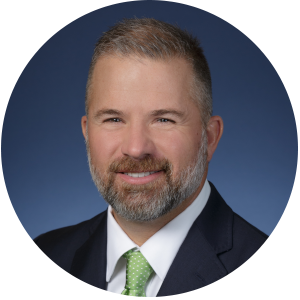 NICK WHITE
NICK WHITE
nick.white@imacorp.com | 913.802.6979
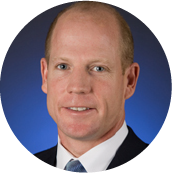 BLAKE WELLS
BLAKE WELLS
IMA Higher Education Practice Lead
blake.wells@imacorp.com | 316.266.6213
 CASEY CASAMENTO
CASEY CASAMENTO
casey.casamento@imacorp.com | 316.266.6249
 NICK BURNS
NICK BURNS
nick.burns@imacorp.com | 303.615.7654

Approach to Service

Strategic
IMA is constantly and diligently scanning the environment and mining data to deliver solutions to clients before clients even know they have a problem.
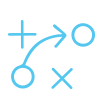
Tactical
When clients need help with specific situations, IMA is there to intervene and help advocate for the best possible outcomes.

Transactional
IMA supports the execution of transaction in a “need it yesterday” timeframe. These are necessary to the flow of business in which accuracy and speed are essential.
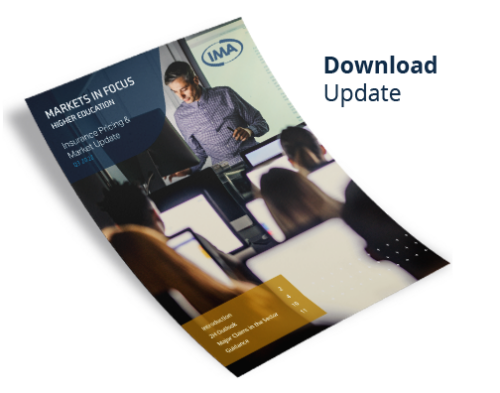

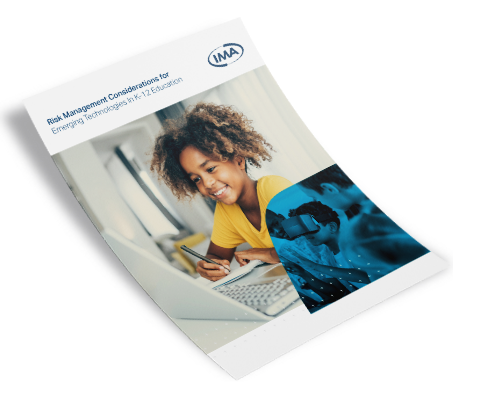

 Active Shooter +Workplace Violence
Active Shooter +Workplace Violence Risk Management
Risk Management
